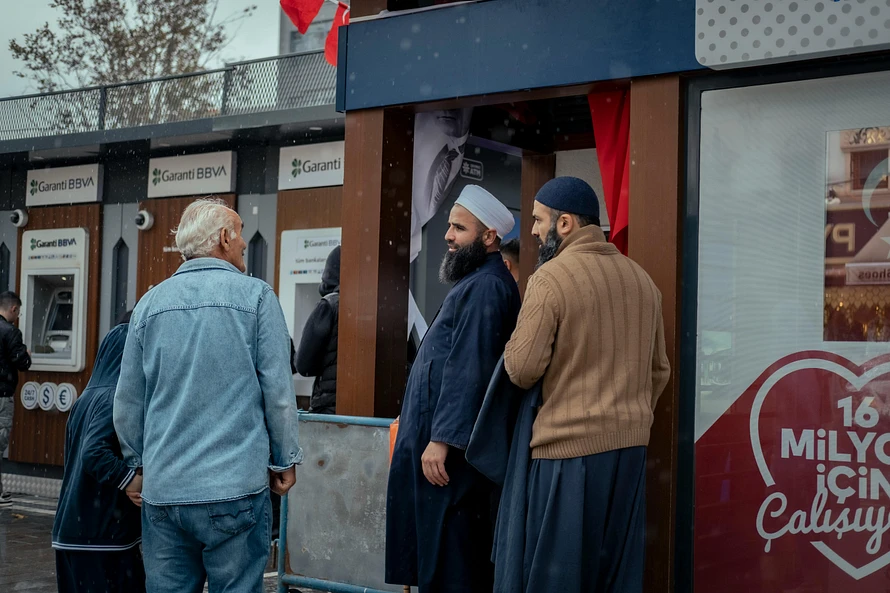Muslim Clothing: A Complete Guide to Islamic Fashion and Modest Wear
Step into the vibrant world of Muslim clothing, where tradition meets style, and modesty creates beauty. Whether you're new to Islamic fashion or looking to expand your understanding, this comprehensive guide will walk you through everything you need to know about Muslim clothing and its rich cultural heritage.
Understanding Muslim Dress Code
Islamic Principles of Dress
Muslim clothing isn't just about fashion – it's a beautiful expression of faith and identity. The core principles stem from the Quran and Hadith, emphasizing modesty, dignity, and respect. Think of these guidelines as a framework that helps Muslims express their faith while maintaining comfort and style.
Modesty Guidelines
Requirements for Men
For Muslim men, modesty in dress includes:
- Covering from navel to knees (minimum)
- Wearing loose-fitting clothes
- Avoiding silk and gold
- Maintaining cleanliness and dignity
Requirements for Women
Women's guidelines include:
- Covering all except hands and face
- Wearing non-transparent fabrics
- Choosing loose-fitting garments
- Avoiding clothing that attracts undue attention
Essential Muslim Garments
Women's Islamic Clothing
The Hijab and Head Coverings
The hijab, more than just a piece of fabric, represents:
- Various styling options
- Different materials for different occasions
- Cultural variations
- Modern interpretations
Abayas and Jilbabs
These outer garments offer:
- Full-body coverage
- Style versatility
- Contemporary designs
- Seasonal adaptations
Men's Islamic Attire
Thobes and Jubbahs
Traditional men's wear includes:
- Different regional styles
- Various fabric options
- Seasonal variations
- Modern adaptations
Head Coverings for Men
Common options include:
- Taqiyah (skull cap)
- Turbans
- Regional variations
- Occasion-specific choices
Regional Variations in Muslim Dress
Middle Eastern Styles
The birthplace of Islam influences fashion through:
- Traditional abayas
- Elegant bishts
- Regional color preferences
- Distinctive embroidery styles
South Asian Fashion
The subcontinent offers:
- Shalwar kameez
- Kurta pajama
- Regional embellishments
- Unique fabric choices
Southeast Asian Influences
Features include:
- Batik patterns
- Local textile traditions
- Cultural fusion styles
- Climate-adapted designs
African Islamic Wear
Characterized by:
- Vibrant colors
- Traditional patterns
- Local fabric techniques
- Cultural fusion elements
Modern Muslim Fashion
Contemporary Interpretations
Today's Muslim fashion scene features:
- Modest streetwear
- Designer collaborations
- Sustainable options
- Tech-integrated fabrics
Modest Fashion Trends
Casual Wear
Modern casual options include:
- Modest athleisure
- Everyday wear solutions
- Comfortable layering pieces
- Mix-and-match options
Professional Attire
Work-appropriate choices feature:
- Business modest wear
- Professional layering
- Modern formal wear
- Career-focused solutions
Occasion-Specific Muslim Clothing
Prayer Wear
Essential prayer garments include:
- Prayer dresses
- Special head coverings
- Comfortable designs
- Travel prayer wear
Special Occasions
Celebration wear features:
- Eid clothing
- Wedding attire
- Festival wear
- Formal event options
Seasonal Considerations
Adapting to weather with:
- Summer-friendly fabrics
- Winter layering solutions
- Spring/Fall transitions
- Climate-appropriate designs
Conclusion
Muslim clothing beautifully combines religious principles with personal style and cultural heritage. From traditional garments to modern interpretations, Islamic fashion offers countless ways to express faith while staying fashionable and comfortable. As the industry continues to evolve, Muslim clothing remains a powerful symbol of identity, faith, and cultural diversity.
Frequently Asked Questions
- How should I start building a modest wardrobe? Start with versatile basics like loose-fitting pants, long tops, and neutral head coverings that can be mixed and matched easily.
- Can Muslim clothing be fashionable and trendy? Absolutely! Modern Muslim fashion offers countless stylish options that maintain modesty while incorporating contemporary trends.
- What should I wear for my first visit to a mosque? Choose loose-fitting, conservative clothing that covers most of your body. Women should bring a head covering.
- How do I choose the right fabric for different seasons? Select breathable materials like cotton for summer and warmer fabrics like wool blends for winter, always ensuring they're not transparent.
- Is it necessary to wear traditional clothing to be properly dressed as a Muslim? No, any clothing that meets Islamic modesty requirements is acceptable, whether traditional or modern in style.
